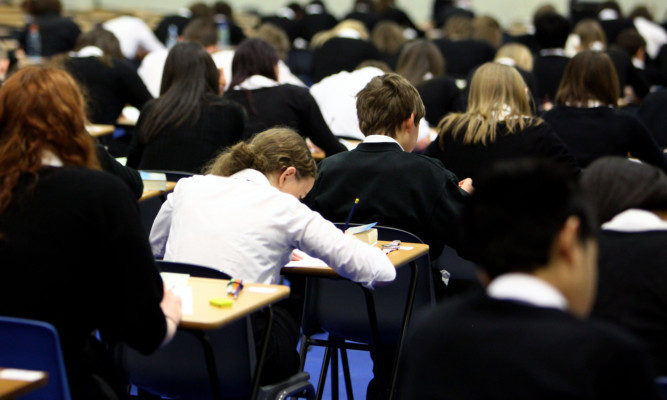Controversial changes to grade boundaries in the new Higher maths exam allowed the Scottish Qualifications Authority (SQA) to make the qualification “robust” and award pupils with the correct grades, its chief executive has insisted.
The exams agency faced criticism earlier this year for setting a maths paper which was far harder than pupils and teachers had expected.
But Dr Janet Brown told Holyrood’s Education Committee that the exam had “done its job in terms of differentiating between candidates who were able to perform very well and candidates who were able to achieve a pass”.
When the exam results were sent out in August, it was revealed that the pass mark for the new Higher maths qualification had been lowered to 34%, with students requiring 60% to get an A grade.
Committee members wanted to know why the exam was so hard it “left some pupils in tears”.
Dr Brown said the paper had been written along the same guidelines as exemplar and specimen papers, and the “structure and nature of questions within it was part of the course and was explained to teachers”.
But, she added, it became “very obvious” that the exam had been “a standard which was over and above what we had anticipated”.
She said grade boundary meetings, which are held every year for every subject, had allowed the SQA to take the challenge of the paper into account.
“We identified that it was harder than we anticipated it being, but we were also able to understand that it had actually done its job in terms of differentiating between candidates who were able to perform very well and candidates who were able to achieve a pass,” she said.
“That allowed us therefore to change the grade boundaries… to make the qualification a robust qualification and to allow us to give the candidates the grades that they required.”
The level of difficulty prompted anger among parents and pupils, while the boundary changes also raised concerns.
Conservative MSP Liz Smith said changes to the grade boundaries meant the pass mark for a subject such as maths was vastly different to others such as classical studies.
While just a third of correct answers was needed for a pass in maths, almost two-thirds was needed for a pass in classical studies.
“I think there is a real concern… about the standards that are applied across the curriculum they (pupils) are sitting,” Ms Smith said.
“Parents want to know that any exams that their children are sitting have the same degree of difficulty in the way that the paper is structured and the choice within that. Are you able to give that guarantee?”
“That is absolutely what we are trying to achieve,” Dr Brown said.
She added: “The overall perception is that the introduction of the new qualifications has gone well.
“There are some things that we need to learn lessons from and I only accept that.”
Dr Brown said the level of difficulty of exams is reviewed, along with the coverage of the coursework associated with that particular assessment, and changes are made accordingly.
“We have done that with the new Higher maths and we are confident that we are going to see a paper that is on standard next year.”
